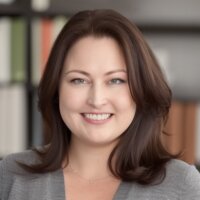One on 1 with a Forensics Expert
Welcome to JDRF NorCal’s blog, One on 1, a series of interviews with people who live with type 1 diabetes (T1D). Members of the community talk about how T1D affects them, how they manage it, and what they have achieved while living with it. Today we talk with Aisling Kelly, an accomplished forensic scientist who is currently a Quality Assurance Manager and a former DNA Analyst with Santa Clara County. She is also getting ready to launch a podcast called T1D in the Wild.

When were you diagnosed with type 1 diabetes (T1D) and what was it like for you at the time?
I was diagnosed in the summer of 1988 at the age of four. As diagnoses go, I was lucky. My mom recognized the early symptoms—constant thirst and frequent bathroom visits—and we headed to the pediatrician. Much of it is a blur, but I clearly remember the doctor telling my mom that I had type 1 diabetes (T1D). The next thing I knew, I was in a children’s hospital ward for more than a week with other kids facing illnesses far more serious than mine.
I started kindergarten just a few weeks after my diagnosis. Managing my diabetes at school consisted of having emergency snacks in my bag to treat low blood sugar and heading to the front office (where my meter was stored) to check my blood sugar at lunch every day. Depending on the number, I would either get to go eat lunch or, if I was high, I would have to run around the flagpole a few times. If my blood sugar didn’t come down, my mom had to come in to give me a shot of insulin. Everyone did the best they could back then, but we all had a bit more freedom when l learned to give myself injections a few years in.
How did you become interested in forensics?
Initially, I wanted to be an FBI agent. When I was young, I was a big fan of the X-Files. Agent Scully was one of the first smart female leads who was someone you wanted to be. By the time I went to university, the FBI wasn’t accepting people with T1D as agents. I was used to hearing “No” back then, so I pivoted and went into biological science. I went on to earn my master’s in forensic science. While I was working on my master’s degree, I was offered a fellowship position with the FBI’s Counterterrorism and Forensic Science Research Unit. So I did ultimately get to work at the FBI, in one way or another, and it was one of the greatest experiences of my life.
As a scientist, how has your outlook on T1D changed over the years?
From a science perspective, the continuous glucose monitor (CGM) has been a game changer for me. From there, I was able to use DIY looping with my CGM and insulin pump, which allowed me to analyze and learn from the numbers and really fine-tune my management. The delivery algorithms already out there and continually being improved upon have the most promise to improve long-term outlooks. When life is already so demanding, the more mental load you can take off, the less overwhelming it can feel. And with the tighter control that people with T1D can reasonably get using these tools, there is the potential for experiencing fewer complications.
As a science investigator, how do you feel about T1D research and unlocking the mysteries behind the causes and cures?
When I was small, I often thought of the day that a cure would become available (it was regularly promised to be just around the corner!). But now it’s not something that I consider much at all. T1D is an autoimmune disease and there are many autoimmune conditions being studied. I believe if we unlock the mystery behind one, we will unlock it for many others, including T1D. Right now, I’m more interested in the research focused on identifying what causes T1D. The research focusing on the role of the gut in the development of T1D is really interesting; it’s something I never expected to creep into the list of potential sources!
What do you want people to know about T1D?
People make a lot of assumptions about T1D, and many people don’t know there is a difference between type 1 and type 2 diabetes. They think diabetes in general is easy to manage with diet and exercise. I think people with T1D often make it look easy. We’re participating in life and we’re quiet about it, so there is an assumption that it’s easy. I wish people knew that living with T1D is 24/7, minute-to-minute. Even with a pump and a CGM, we need to make decisions about our management every five to ten minutes. It’s not impossible, but we’re doing it on top of everything else.
What would a cure mean to you?
The first word that comes to mind is freedom. But I wish a cure was there for me earlier in my life. Where would I be today if there had been a cure decades ago? A lot of the job choices I’ve made have been around T1D, including making sure I have good insurance. But I am also confident that the person I am today is because I have this disease, and I’ve met people and had experiences that I would not have had without it. It has certainly made me more resilient and solution focused than I think I would have been had I not been diagnosed.
Learn more about how JDRF is fighting type 1 diabetes (T1D) and our impact on improving lives today and tomorrow at jdrf.org/impact.